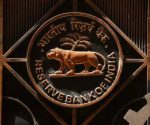Teen with ‘snake-spine’ operated on after three years of hopes on homeopathy | Mumbai News – The Times of India

Mumbai: For five years, Aditi (name changed), a 15-year-old from Ichalkaranji, lived with a spine so severely curved that doctors compared it to a “snake-spine.” Considered too risky for surgery, her family turned to homeopathy, only to realise after three years that it was ineffective.
Desperate for a solution, they scoured the internet and found promising treatment options at Mumbai’s Jaslok Hospital but discovered that the cost was beyond their reach. “Our local MLA helped us through govt schemes,” said Renuka, Aditi’s mother.
At Jaslok, doctors diagnosed Aditi with kyphoscoliosis, a severe spinal deformity causing both bending and twisting, linked to Neurofibromatosis 1 (NF1), a genetic disorder that leads to skin spots and small tumours along the spine. Her spinal curve measured a staggering 120 degrees. But there was another factor uncommon in such patients: she had a fused lamina, where two vertebrae were stuck together since birth.
Dr Manish Kothari, a spine surgeon at Jaslok, spent two weeks searching medical literature for a similar case with a birth defect but found none. He consulted experts at AIIMS Delhi, who also had never seen NF1 combined with a congenital spinal defect. “This is the first documented instance of NF1 with an additional birth defect,” he said.
NF1-related spinal defects typically develop over time, worsening during puberty. Aditi’s condition was detected just before the Covid-19 pandemic, but lockdowns delayed treatment, allowing the curve to worsen significantly. By the time she returned to doctors, local specialists warned of a more than 50% risk of permanent paralysis if surgery was attempted. However, Dr Kothari argued that without intervention, the increasing spinal curvature would inevitably lead to paraplegia.
The spine was carefully broken into two pieces, and an entire vertebra was removed. It was then reassembled using titanium screws and rods. Aditi’s curve was reduced to 60 degrees, though she may require another operation depending on how her spine heals.
She was discharged on Thursday. Renuka reflected on the years lost to alternative practices. “We saw our daughter in pain for years, which could have been avoided if we sought medical treatment sooner. People need to remember that things like homeopathy are not for serious illnesses.”
















